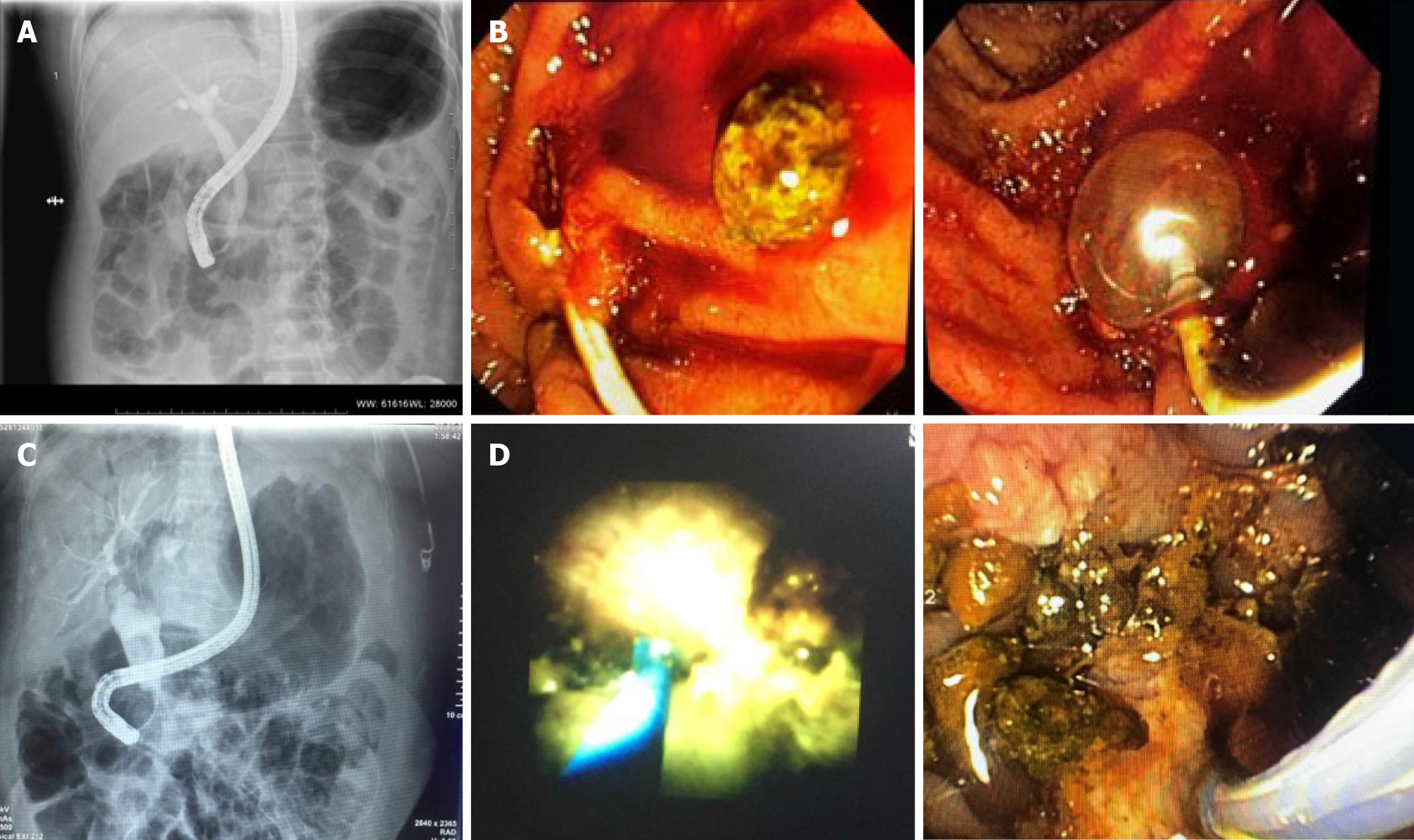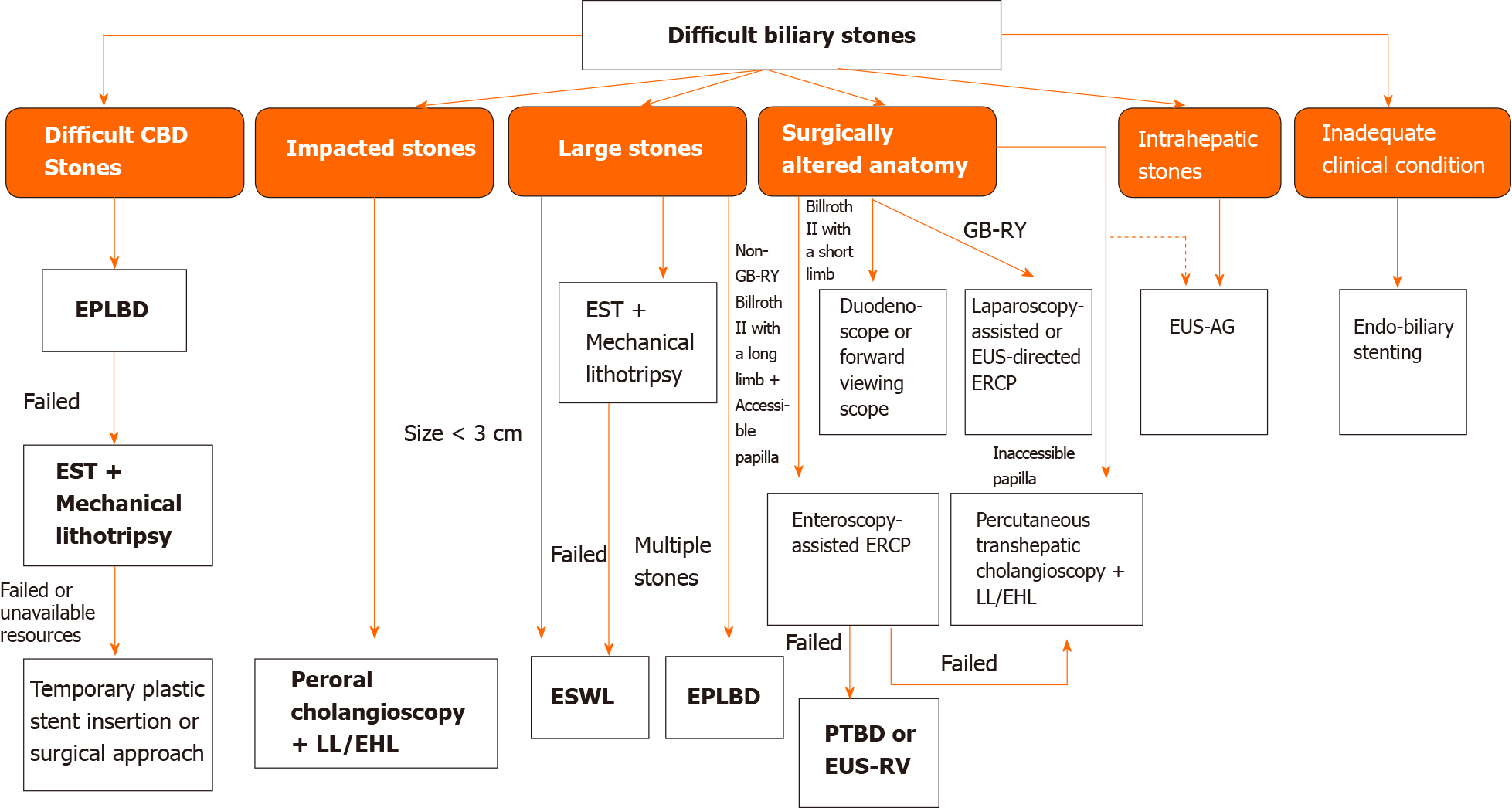Copyright
©The Author(s) 2021.
World J Gastrointest Endosc. Jul 16, 2021; 13(7): 198-209
Published online Jul 16, 2021. doi: 10.4253/wjge.v13.i7.198
Published online Jul 16, 2021. doi: 10.4253/wjge.v13.i7.198
Figure 1 Multiple procedures or additional interventional techniques are often necessary to achieve complete stone clearance.
A: A cholangiography image showing dilated biliary tract with distal narrowing and impacted stone. Endoscopy unit database Medistra Hospital, Jakarta; B: Endoscopy images of impacted distal common bile duct (CBD) stone removal with balloon. Endoscopy unit database, Medistra Hospital, Jakarta; C: The cholangiography image of a patient with CBD dilatation on the proximal and large CBD stone with distal narrowing. Endoscopy unit database, Medistra Hospital, Jakarta; D: Patient underwent laser lithotripsy with Spy Glass Cholangioscopy and multiple fragmentation of stones removal. Endoscopy unit database, Medistra Hospital, Jakarta.
Figure 2 Proposed algorithm for management of difficult biliary stones[6,59,62].
CBD: Common bile duct; EPLBD: Endoscopic papillary large balloon dilation; EST: Endoscopic sphincterotomy; LL: Laser lithotripsy; EHL: Electrohydraulic lithotripsy; ESWL: Extracorporeal shockwave lithotripsy; ERCP: Endoscopic retrograde cholangiopancreatography; PTBD: Percutaneous transhepatic biliary drainage; EUS-RV: Endoscopic ultrasound-rendezvous technique; EUS: Endoscopic ultrasound; EUS-AG: Endoscopic ultrasound-antegrade.
- Citation: Lesmana CRA, Paramitha MS, Lesmana LA. Innovation of endoscopic management in difficult common bile duct stone in the era of laparoscopic surgery. World J Gastrointest Endosc 2021; 13(7): 198-209
- URL: https://www.wjgnet.com/1948-5190/full/v13/i7/198.htm
- DOI: https://dx.doi.org/10.4253/wjge.v13.i7.198










